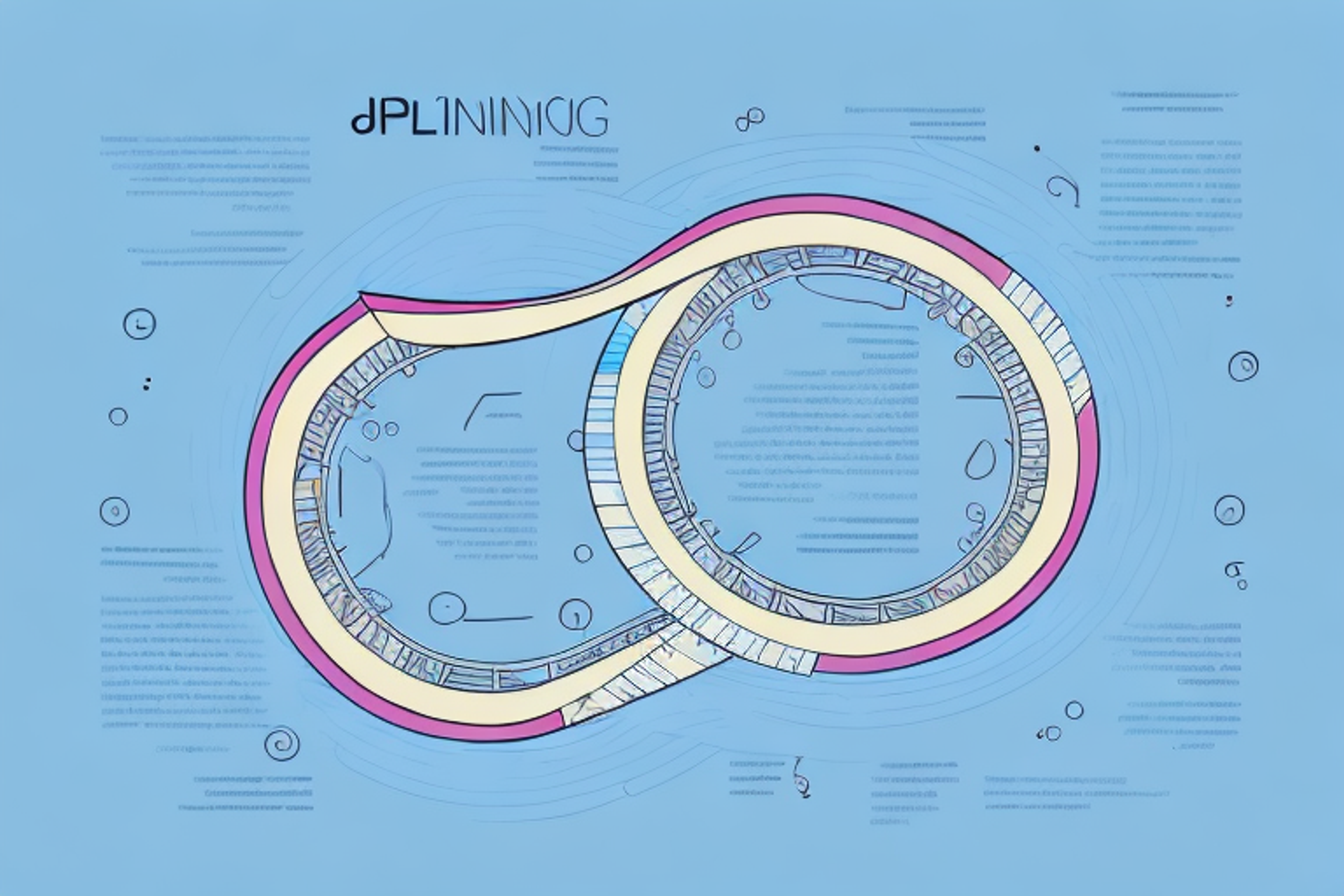H1B Sponsorship: The Definitive Guide for Companies and Employees
Discover everything you need to know about H1B sponsorship for both companies and employees in our comprehensive guide.
Posted April 10, 2025

Table of Contents
Free Event

Featuring Christina B.
Is Management Consulting Right for You? Decoding the Career Path
Starting Thursday, April 17
11:30 PM UTC · 60 minutes

Featuring Christina B.
If you are an international worker seeking opportunities in the United States, or a US company looking to hire non-US citizens, you may have heard of the H1B visa program. The H1B visa is a non-immigrant visa that allows US employers to sponsor international workers with specialized skills to work in the US for up to 6 years, with the possibility of extension. In this article, we will delve into the H1B visa program and provide a comprehensive guide to H1B sponsorship for both employers and employees.
Understanding the H1B Visa Program: An Overview
The H1B visa program was created by the US government to allow US companies to fill specialty positions with highly skilled foreign workers, when no qualified US workers were available. H1B visa is a popular and competitive visa category, and applicants are subject to a lottery system due to the limited number of visas available each fiscal year. This visa is usually sponsored by employers who are willing to hire international talent for positions requiring specialized skills such as science, engineering, and technology.
One of the benefits of the H1B visa program is that it allows foreign workers to gain valuable experience and exposure to the US work culture. This experience can be beneficial for their future career growth and can also contribute to the growth of their home country's economy. Additionally, H1B visa holders can bring their families to the US and their spouses can also work in the US, which can provide financial stability for their family.
However, the H1B visa program has also faced criticism for being used to exploit foreign workers by paying them lower wages than their US counterparts. There have been calls for reform to ensure that the program is not being used to undercut US workers and that foreign workers are being paid fairly. Despite these criticisms, the H1B visa program remains an important tool for US companies to attract and retain highly skilled international talent.
The H1B Visa Application Process: Step-By-Step Guide
The H1B visa application process can be complex and lengthy. It involves several steps that both the employer and the employee must complete. The first step for employers is to file a Labor Condition Application (LCA) with the Department of Labor (DOL). After the LCA is approved, the employer must file Form I-129, Petition for Non-immigrant Worker, with US Citizenship and Immigration Services (USCIS). The employee must also prepare and submit their own visa application, including documentation to establish eligibility and qualifications for the H1B visa. Once both applications are processed and approved, the employee can start working in the US on an H1B visa.
It is important to note that the H1B visa is a non-immigrant visa, which means that it is temporary and does not provide a direct path to permanent residency or citizenship. However, it is possible for H1B visa holders to apply for permanent residency through other channels, such as family sponsorship or employment-based immigration.
Another important aspect of the H1B visa application process is the annual cap on the number of visas that are available. Currently, the cap is set at 65,000 visas per year, with an additional 20,000 visas available for individuals who have earned a master's degree or higher from a US institution. Because the demand for H1B visas often exceeds the available supply, the application process can be highly competitive and time-sensitive.
Qualifying for H1B Sponsorship: Employer and Employee Eligibility Criteria
To qualify for H1B sponsorship, both the employer and the employee must meet certain eligibility criteria. Employers must be able to demonstrate that the position they are seeking to fill requires specialized skills and that they have attempted to recruit US workers for the position. They must also agree to pay the prevailing wage for that position. Employees, on the other hand, must have a bachelor's degree or higher (or equivalent work experience) in a specialty field and meet other requirements. The employer and the employee must also establish a valid employer-employee relationship.
One of the other requirements for employees seeking H1B sponsorship is that they must not have any criminal convictions or immigration violations. Additionally, the employee must be able to demonstrate that they have the necessary skills and experience to perform the job duties required for the position.
It is important to note that there is a cap on the number of H1B visas that are issued each year, and the demand for these visas often exceeds the supply. As a result, the application process can be highly competitive, and it is important for both employers and employees to ensure that they meet all of the eligibility criteria and submit a strong application.
H1B Visa Cap and Lottery System: What You Need to Know
The H1B visa program is subject to an annual cap on the number of visas available. For the fiscal year 2021, the cap is set at 85,000, with 65,000 reserved for regular applicants and 20,000 for applicants with a US master's degree or higher. Given the high demand for H1B visas, USCIS uses a lottery system to randomly select applications that will be processed. This makes the visa application process even more competitive and challenging for both employers and employees.
Differences Between Regular and Premium Processing for H1B Visa Applications
The H1B visa application process can take several months to complete. However, both employers and employees can choose to expedite the process by opting for premium processing. Premium processing is a service offered by USCIS that guarantees a response to a petition within 15 calendar days. Premium processing requires an additional fee of $1,440, but can significantly speed up the application process.
Tips for Preparing a Strong H1B Visa Application Package
To increase the chances of success in the H1B visa application process, both employers and employees must prepare a strong application package that meets all the requirements and provides all the necessary information and supporting documents. Some tips for preparing a strong application package include carefully following instructions, providing clear and concise information, providing accurate and up-to-date supporting documents, and seeking professional advice or assistance if necessary.
How to Find an H1B Sponsorship Opportunity in the US Job Market
If you are an international worker seeking an H1B visa sponsorship, one of the first steps is to find a US employer who is willing to sponsor you. This can be challenging, especially given the competition for H1B visas. However, there are online resources and job boards that can help international workers connect with US employers seeking specialized skills. Networking, attending job fairs and conferences, and seeking referrals from other professionals can also increase your chances of finding an H1B sponsorship opportunity.
Negotiating Your Salary and Benefits Package as an H1B Employee
As an H1B employee, you have the right to negotiate your salary and benefits package with your employer. However, the prevailing wage requirement for H1B visas means that your salary must meet certain minimum requirements based on the position, location, and industry. It is important to understand your rights and obligations as an H1B employee, including the requirement to work only for your sponsoring employer and the risk of losing your visa status if your employment is terminated.
Maintaining Your Legal Status as an H1B Employee: Compliance Requirements
Once you have been granted an H1B visa and start working in the US, you must comply with several legal requirements to maintain your legal status. These include maintaining a valid employer-employee relationship, working only for your sponsoring employer, notifying USCIS of any changes in employment or address, and complying with the terms of your visa status. Failure to comply with these requirements could result in the revocation of your visa and legal action against both you and your employer.
Changing Jobs or Employers on an H1B Visa: Key Considerations
If you are an H1B employee and wish to change jobs or employers, there are several key considerations to keep in mind. You must first obtain a new job offer and have your new employer file a new visa petition on your behalf. The process can be complex and lengthy, and you may need to prove that you have maintained your legal status and that the new job qualifies for H1B sponsorship. Additionally, you must ensure that your new employment complies with all the legal requirements of the H1B visa program.
Alternatives to the H1B Visa Program for International Workers
If you are an international worker seeking opportunities in the US, but are unable to obtain an H1B visa or prefer an alternative to this program, there are other visa categories and programs that may be available to you. These include the L1 visa program, the O visa program, the E visa program, and the F visa program. Each program has its own eligibility criteria, requirements, and limitations, so it is important to choose the right program that fits your situation and goals.
Common Mistakes to Avoid When Applying for an H1B Visa
The H1B visa application process is complex and requires careful attention to detail. Many employers and employees make common mistakes that can lead to delays, rejections, or even revocations of the visa. Common mistakes to avoid include failing to meet all eligibility criteria, providing inadequate documentation, failing to meet prevailing wage requirements, and not complying with all legal requirements. Seeking professional advice and assistance can help you avoid these mistakes and increase your chances of success.
Future of the H1B Visa Program: Trends and Predictions
The H1B visa program has been subject to a number of changes and challenges in recent years, including restrictions on visa issuance, increased scrutiny of applications, and changes in immigration policies and regulations. The future of the H1B visa program is uncertain, but trends and predictions suggest that it will continue to be a popular and competitive program for international workers seeking opportunities in the US.
Immigration Policy Changes Impacting the H1B Visa Program
US immigration policies and regulations are subject to constant change and updates. These changes can have a significant impact on the H1B visa program, as well as other visa programs and immigration processes. Recent changes impacting the H1B visa program include increased scrutiny of applications, restrictions on visa issuance for certain countries, and changes in the prevailing wage requirements. It is important for employers and employees to stay up-to-date with these changes and seek professional advice or assistance.
In conclusion, the H1B visa program is a complex and competitive program that requires careful planning and preparation. Employers and employees must meet strict eligibility criteria and comply with legal requirements to successfully obtain and maintain H1B sponsorship. However, with proper guidance and preparation, the H1B visa program can be a valuable tool for US companies and international workers seeking opportunities to grow and thrive together in the US market.


















